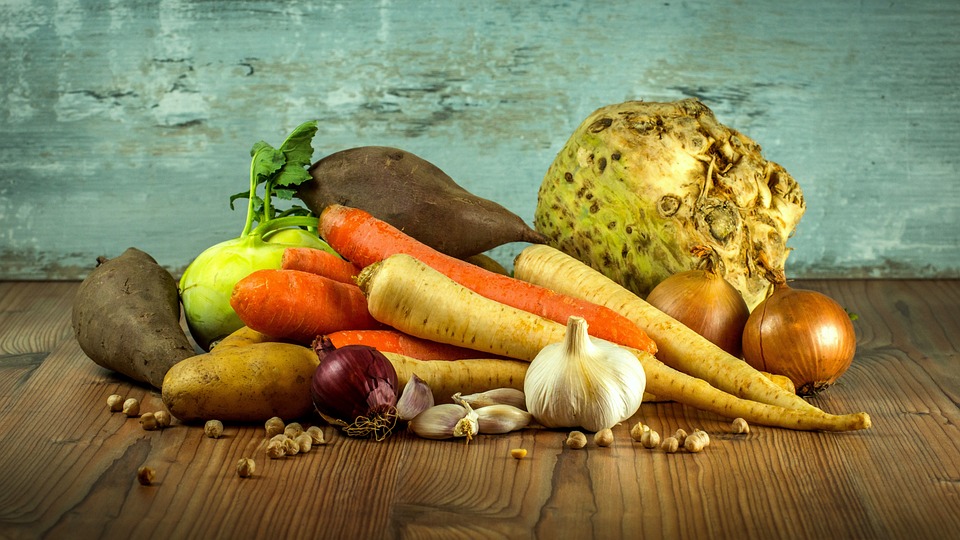Table of Contents
Growing a vegetable in your garden is as fun as growing a flowering or evergreen plant. Vegetables are good for your health. They contain protein, fibre, carbs, and vitamins. There is always joy in eating the vegetables that you have grown at home. It can also help you cut down the costs of purchasing vegetables from the market. In addition, you can sell them directly on the market.
September is the perfect month to grow some veggies in the UK. However, you can grow them in your garden anytime you want. This blog will assist you in learning about the perfect vegetables that you can harvest during this period. Before cultivating, you must consider a few things.
Make sure you are providing your vegetables with proper sunlight and water. Choose the right soil and ensure adequate circulation of air.
Here’s a List of 8 Vegetables that You Can Grow in September:
1. Onion

Onions are a common vegetable that people use in other recipes. It is an essential ingredient that can influence the taste and cooking of any delightful cuisine. Onion has antioxidants that can improve your blood sugar level. In addition, they can improve your digestive system. ‘Allium cepa’ is its botanic name, and they belong to the biennial vegetable group. An onion can grow up to 18 inches tall inside the soil. They require full and bright sunlight to grow effectively. If you add their seeds in the summer, they can form a perfect shape in September. Make sure you put them where they can get proper sunlight.
Onion is the most popular vegetable to plant in September. While planting the seeds, be careful about the temperature and the air. Thus, plant the seeds within a space of 4 to 12 inches. Summer is the right time to harvest the seeds, as it can help them to catch the bright sun’s rays. Choose well-drained soil to add onion seeds. An oniongrows in loamy soil with a neutral acid level. Try not to provide excess water to the onion seeds; they don’t require it. Give them water on a weekly basis. Fertilise them with a fertiliser that contains a high level of nitrogen. It can ensure their growth.
2. Garlic
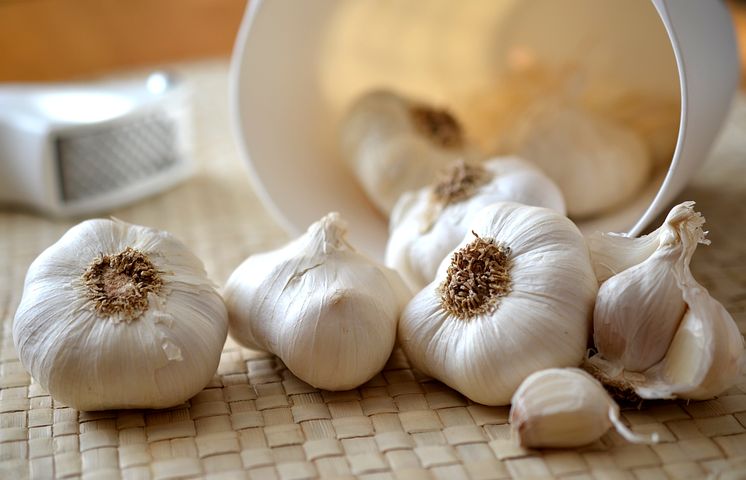
Garlic is the second most common and popular vegetable that people use on a daily basis around the world. You can also plant them in September. It can also be helpful in making other delicious recipes and gravies. Garlic shares the same characteristics as an onion and grows inside the soil. It can grow up to 18 inches tall and 12 inches wide from the soil. Nowadays, many scientists use garlic to manufacture pharmaceutical items. Like onions, garlic also helps in improving the digestive system and blood sugar levels. Garlic boosts immunity, which can help you get rid of colds. They require full and bright sunlight to grow. They belong to the bulb vegetable group.
A clove of garlic grows in well-drained, moist soil with a neutral acid level. Just make sure the soil pH level is around 6 to 7. Spring is the perfect time to plant their seeds in the soil. Till September, it can gain a significant height. Be careful when planting garlic seeds in your garden. Provide a space of around 2 inches between all the seeds. Like full sunlight, they require proper humidity. It doesn’t take much effort to grow garlic in your garden. Give them water on a weekly basis and a good amount of fertiliser.
3. Broccoli
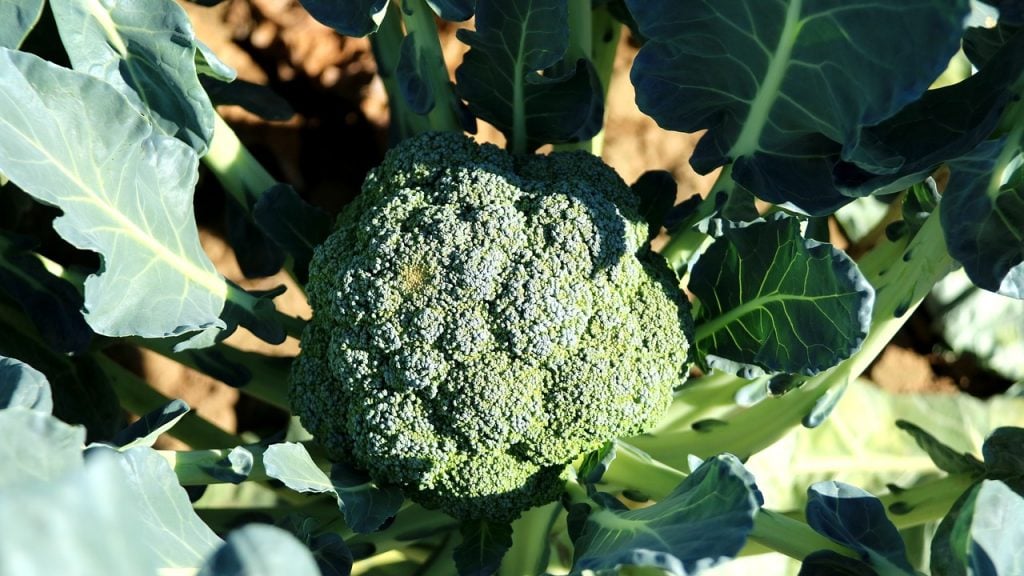
Broccoli looks almost identical and shares the same characteristics as cauliflower, but both are different. Broccoli is a popular green vegetable that has several health benefits. It helps you to reduce the level of constipation and improves your digestion system. It also contains vitamins, fibre, carbs, and protein. You can grow them in your garden in September. It requires the same care as the cabbage, brussels sprouts, and leeks. Broccoli belongs to an annual, biennial vegetable group. They can grow up to 24 inches wide and 30 inches tall in the soil. In order to harvest them in your garden, plant the seeds in the spring. It can help the vegetable plant in consuming the bright sunlight.
Full sunlight plays an important role in the development of broccoli. Plant them in a well-drained, moist, and loamy soil. Just make sure the soil pH and acid level are neutral. Keep providing water to the seeds adequately, but don’t overwater them. They are one of the popular vegetables to plant in September. Broccoli prefers well-draining soil to grow, and too much water can destroy its development. Provide a space of 1.5 inches for the seeds and ensure good air circulation and humidity. Don’t forget to fertilise the plants to maintain their nutrient levels.
4. Radish
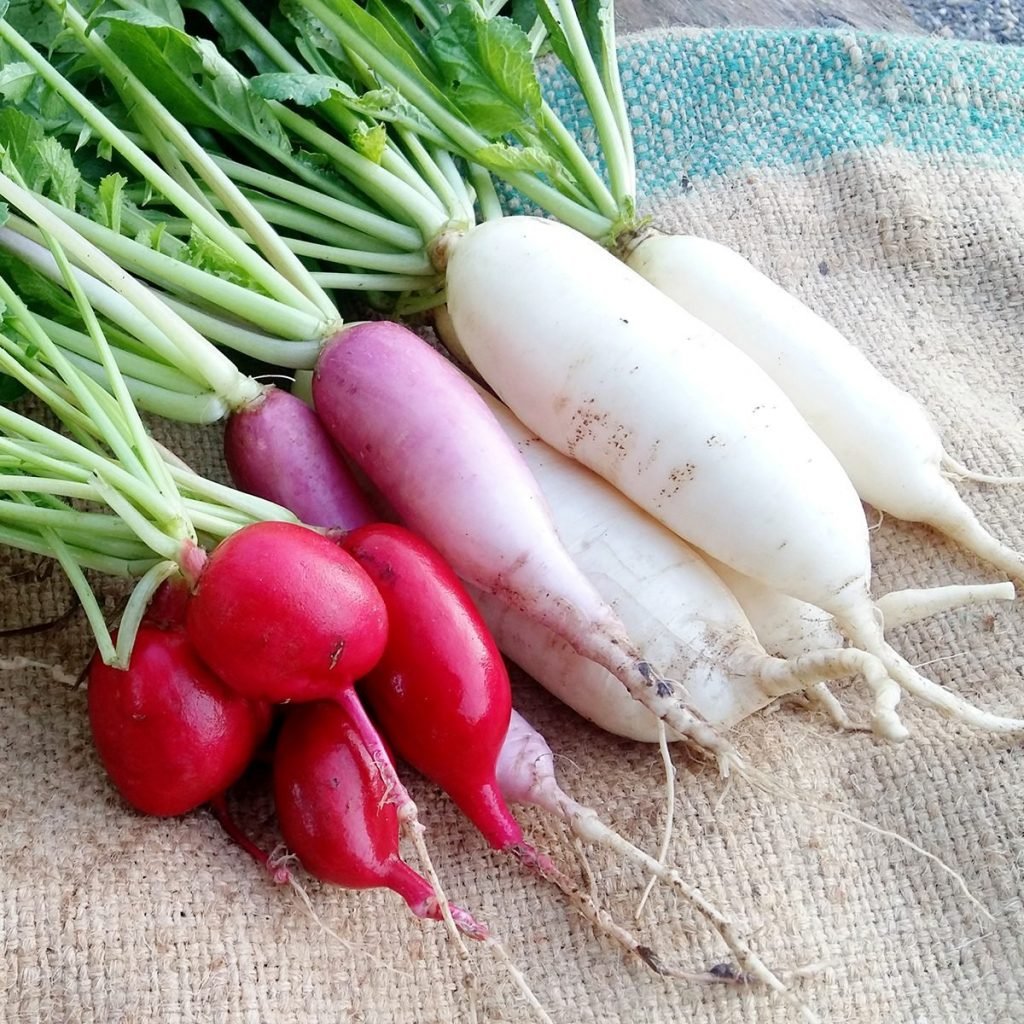
You can grow radishes in your garden in September. It requires the same care as onions, garlic, carrots, and beetroots. They grow up to 8 inches tall inside the soil. They need bright and full sun to grow sufficiently. There are various types of radishes you can add to your garden. A radish is also used in the making of soup and other delightful dishes. It grows in moist, well-drained, sandy, and loamy soil with a neutral acid level. Just make sure the soil pH level is around 6 to 7. Radishes also have health and nutritional advantages. It can help you in reducing your blood sugar levels and eliminate diabetes. Radish is also beneficial for the lungs and cardiovascular functions.
Radish belongs to the annual vegetable group. You can plant them in September. Summer is the best time to plant their seeds. It can gain significant height until September. Pick a place where it can get direct and bright sunlight. An adequate level of sunlight can help them grow faster. Provide a space of 2 inches for the seeds during the plantation. Keep watering them on a daily basis and maintain the soil moisture level. Fertilising isn’t necessary for radishes if you choose rich, well-drained soil.
5. Cabbage

Cabbage is one of the popular leafy vegetables that you can grow in September in the UK. It requires similar care as cauliflower, broccoli, carrots, radishes, onions, and garlic to grow. Cabbage also has multiple health benefits and antioxidants. It includes nutrition and vitamins that may help your digestive system, heart functions, and skin. The botanic name of cabbage is ‘Brassica’, and it belongs to the ‘Brassicaceae’ vegetable group. It can grow up to 2 feet tall and wide from the soil. Cabbage is an annual, biennial vegetable, and it requires full sun to grow effectively. Don’t plant cabbage seeds in your garden when the temperature is more than 26 degrees Celsius. Too much heat can damage the cabbage’s foliage.
Put the cabbage seed in September in a place where it can get full sunlight. Just make sure it’s not too bright. Provide a space between 18 inches and 2 feet for the seeds. More space will help them grow sufficiently. It ensures good air circulation and appropriate humidity. They grow in well-drained, loamy soil with a neutral acid level. Fertilise them with a fertiliser that contains nitrogen, potassium, and phosphorus equally (example: 11-11-11 NPK fertiliser).
6. Spinach
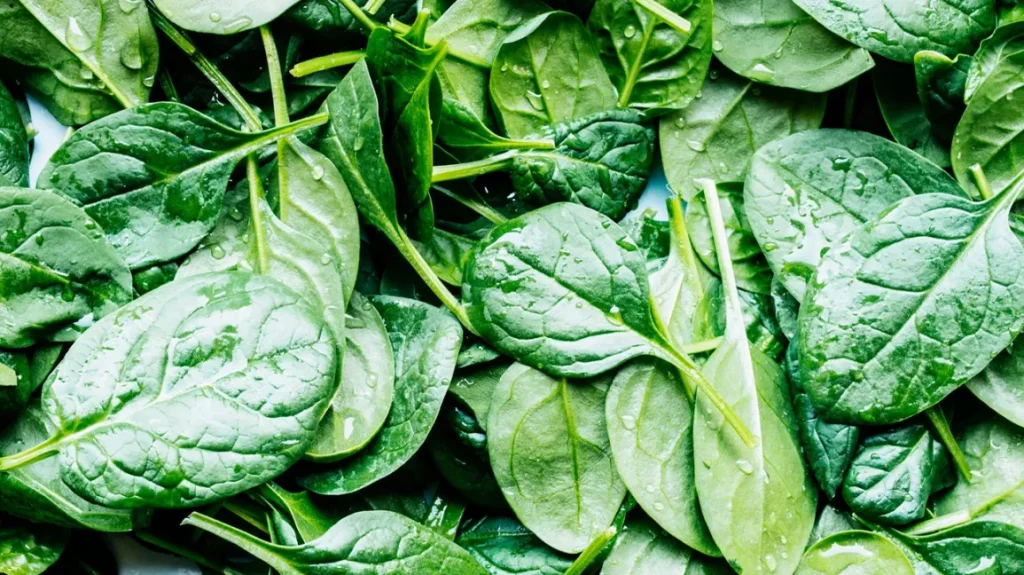
Spinach is a popular green vegetable, and you can harvest it in your garden in September. They are very familiar in the European region, even in the UK. Spinachcontains high levels of nutrients, proteins, vitamins, and carbs. It can help you to control your blood sugar levels and weight. Spinach also improves the health of your bones and eyesight. People use spinach in a salad or in some delightful recipes. They prefer adequate temperatures to grow sufficiently. If you plant them in the summer, they can grow perfectly until September. Spinach belongs to the annual vegetable group. It can grow up to 12 inches wide and tall in the soil.
Spinach requires well-drained, loamy, and moist soil with a neutral acid level to grow. Just make sure the soil pH level is around 6.5 to 8. Try not to provide them with bright sunlight. Spinach grows faster when the soil is moist and less dry. Too much sunlight can reduce the soil’s dryness, which may damage the growth of this vegetable plant. Plant the seeds within a 6-inch gap. It can promote good air circulation and ensure the leaf’s growth. Keep watering them daily to maintain the soil’s moisture level.
7. Lettuce
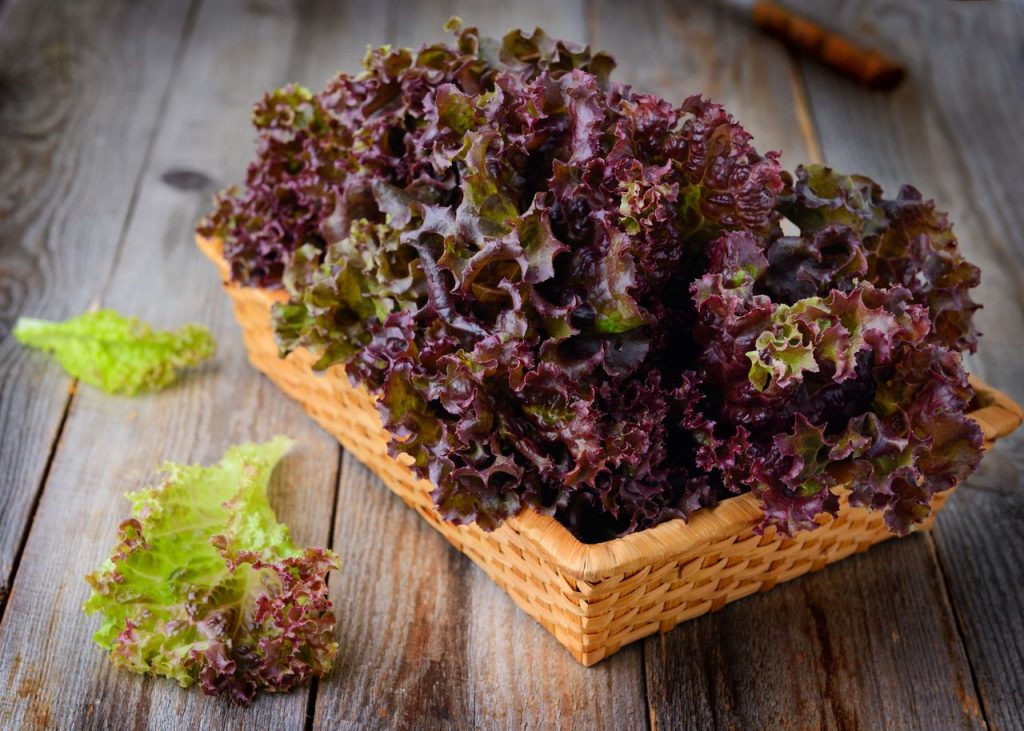
Lettuce is another famous green vegetable that you can harvest in your garden. It shares the same characteristics and requires similar care as cabbage and other leafy vegetables. The perfect temperature to grow lettuce is around 7 to 22 degrees Celsius. Thus, putting them in your garden in September is the best option. There are various types of lettuce commonly found in the UK. They are a delicious addition to your bowl of salad or sandwich. Lettuces contain vitamins, protein, and iron at low calorie and fat levels. They are also popular as winter vegetables, but you can plant them in any season. Lettuce is a seasonal and annual vegetable that can grow up to 12 inches tall from the soil.
Like other leafy vegetables, lettuce also requires full sunlight. However, too much sunlight can damage the foliage of this plant. Lettuce grows in rich, loamy, and well-drained soil. Just ensure the soil pH and the acidic level are neutral or low. Maintain the soil’s moisture by watering it on a daily basis. Dry soil can disrupt the growth process of this vegetable. Fertilise them weekly with a nitrogen-based fertiliser. Provide a gap of 6 inches during the process of sowing seeds.
8. Turnips
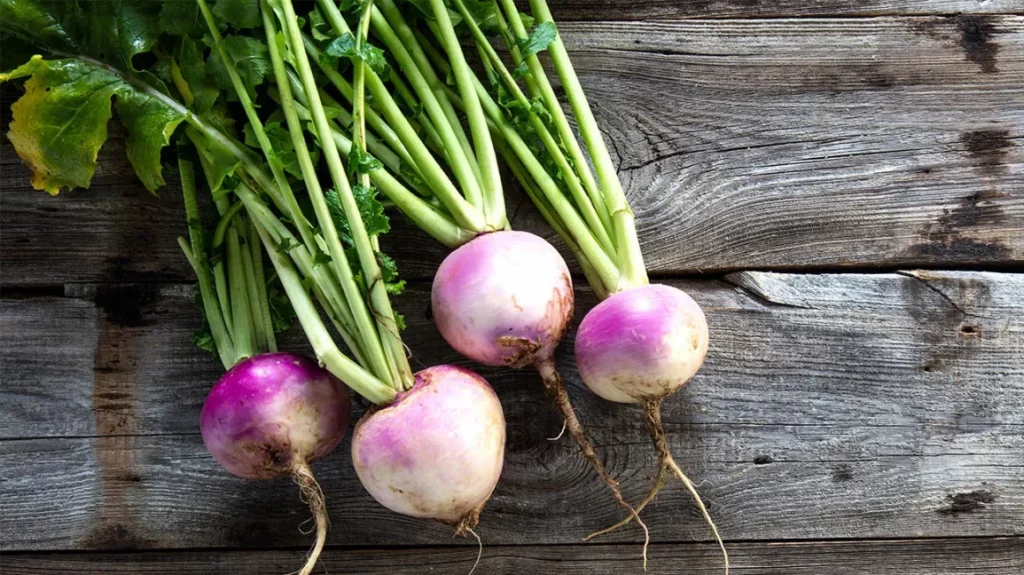
Turnips look quite similar to radish, but they are different veggies. They both require a similar amount of care and share the same traits. You can consume them raw or add them to your recipes. The shape of a turnip is as same as a tennis ball. Their botanic name is ‘Brassica Rapa’. They are also annual vegetables that grow inside the soil, like onions, carrots, radishes, and garlic. Turnips contain low-calorie levels and are good for your health. It can provide you with vitamin C, carbs, and protein. Consuming turnips can improve your digestive system, heart rate, and blood levels. Turnips are very popular vegetables that are found across Europe, even in the UK.
A turnip can grow up to 18 inches tall inside the soil. It grows in sandy, well-drained soil with lower acid levels. Just make sure the soil pH level is around 6 to 6.5. Turnips require full sunlight to grow, but too much bright sunlight can disrupt their growth. Provide a space between 3 and 4 inches between the seeds for adequate air circulation. Water them properly, but avoid overwatering. Adding too much water can damage the roots of turnips. Turnips don’t require fertiliser, as they grow organically.
Summing Up
All in all, there are numerous vegetables that you can grow in your garden. They are seasonal and annual plants. Vegetables contain proteins, vitamins, and other elements that are really beneficial for your health.
For example, spinach consists of iron and can control your blood levels. Garlic, broccoli, and cabbage can help you get rid of digestive problems and provide you with vitamins, carbs, and proteins. You are required to ensure their proper care, such as providing them with water, air, sunlight, and fertilisation.
One thing you must keep in mind is that not every vegetable has the same traits. Not every vegetable grows under the same conditions or at the same soil level. Hopefully, this blog guided you about some vegetables that you can plant in September.
Let us know in the comments which one you are going to add first.

